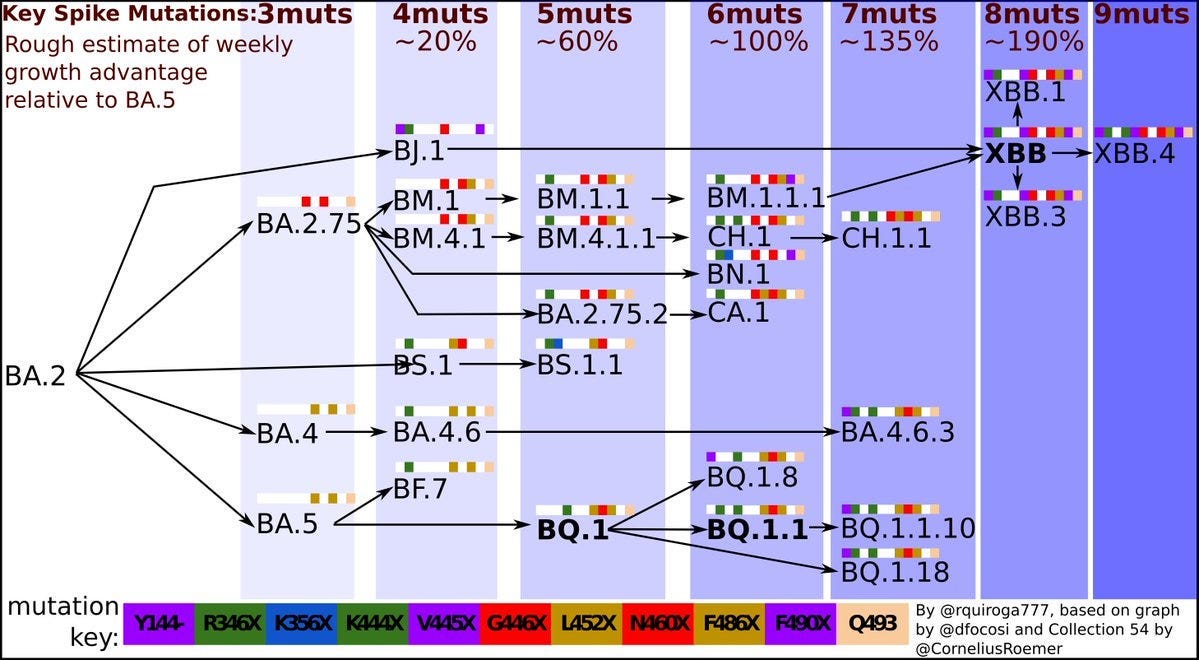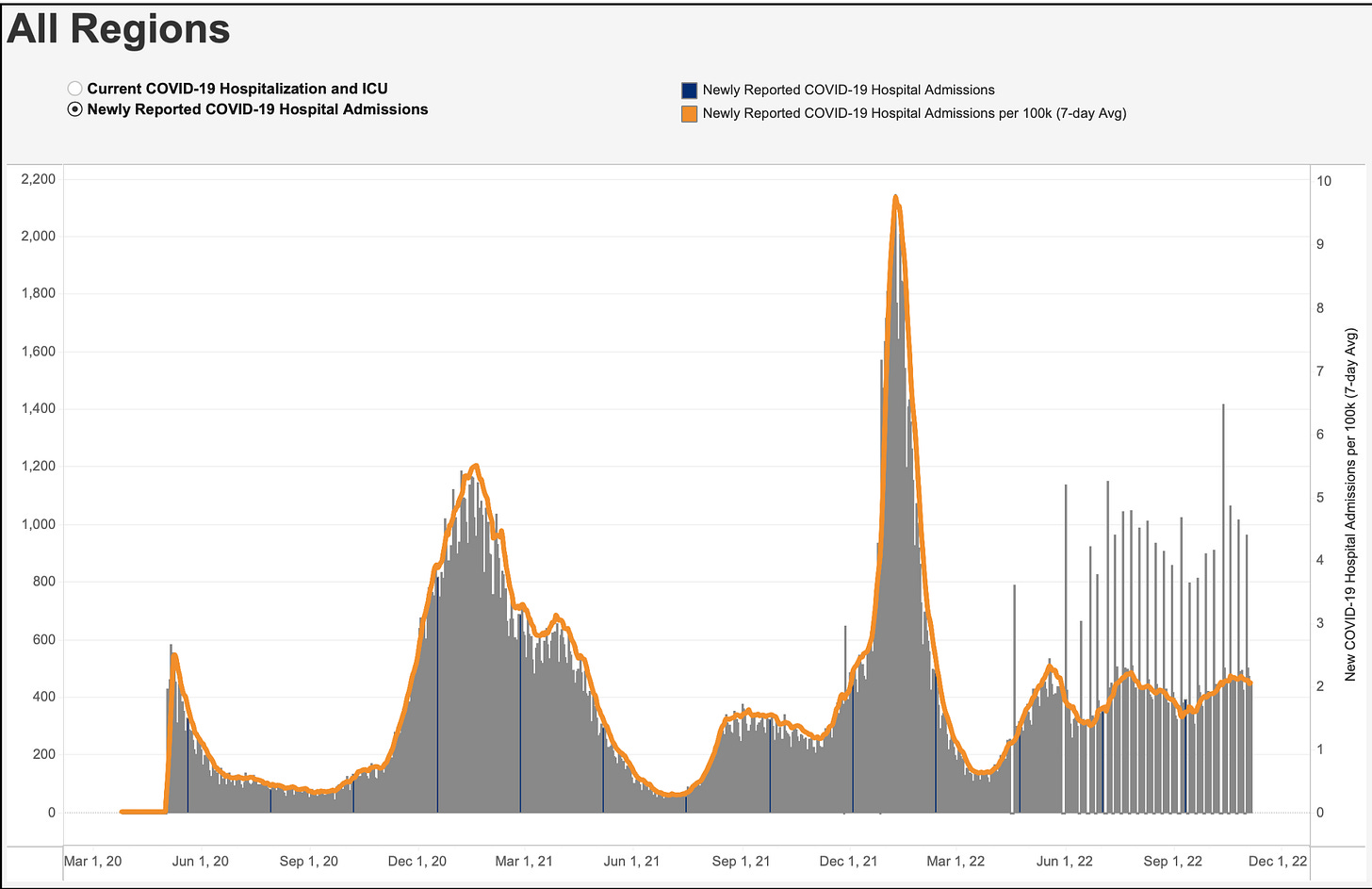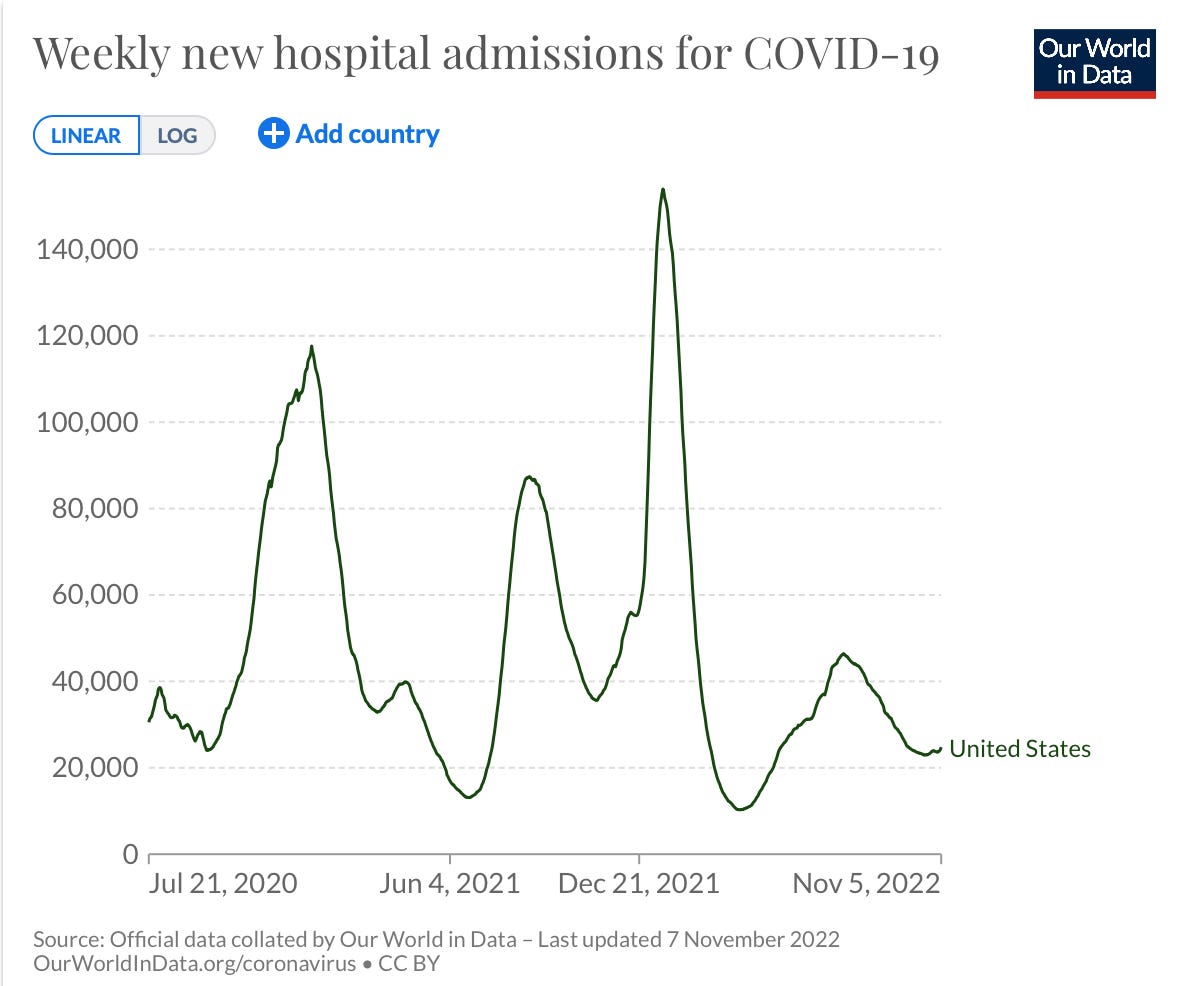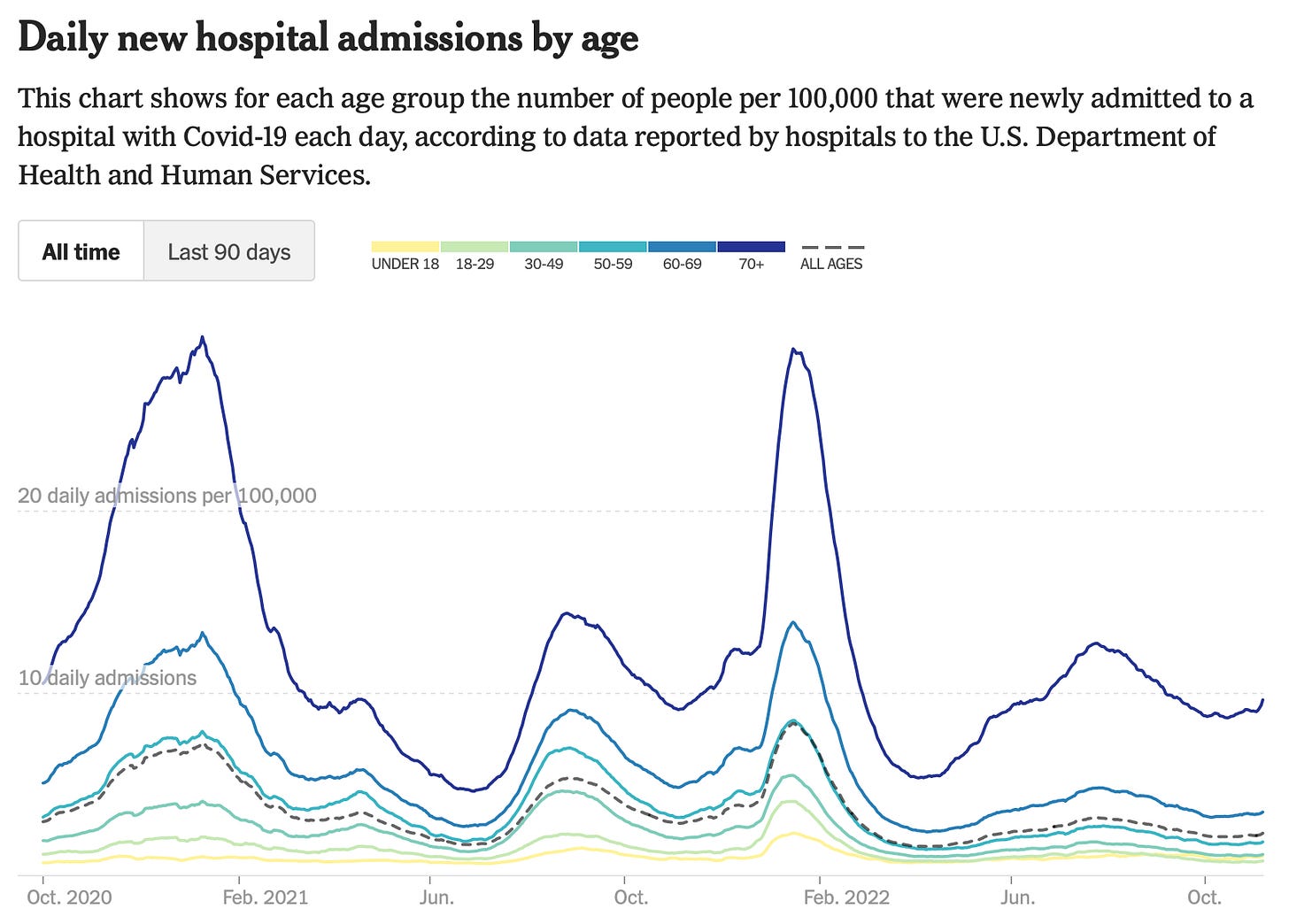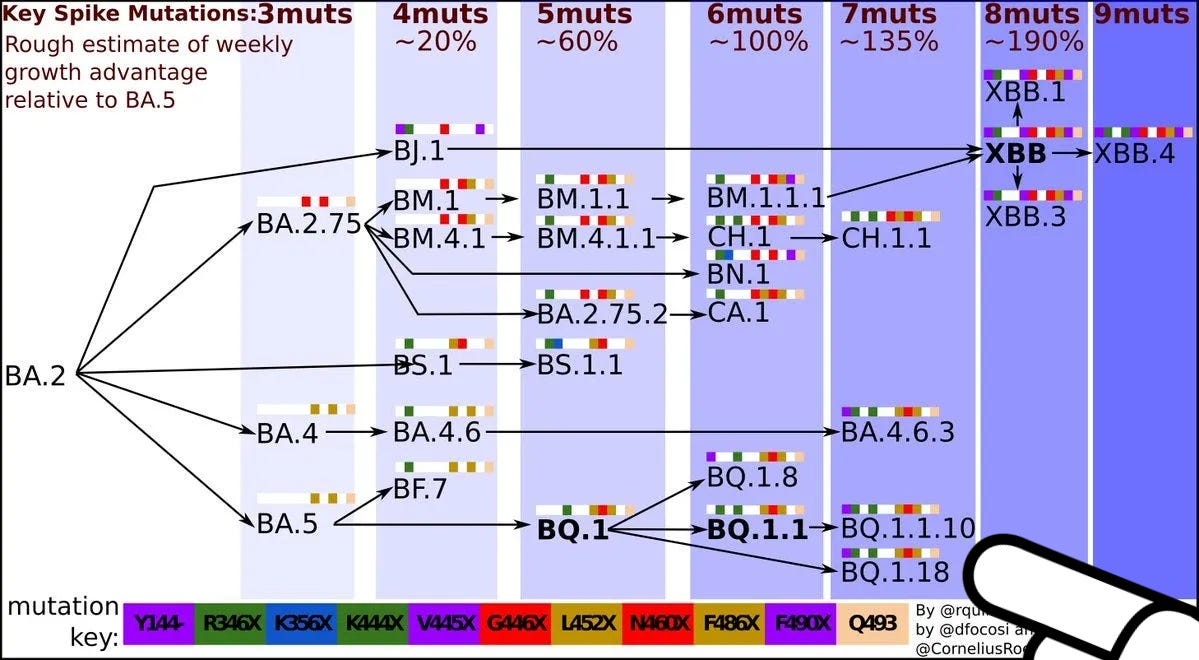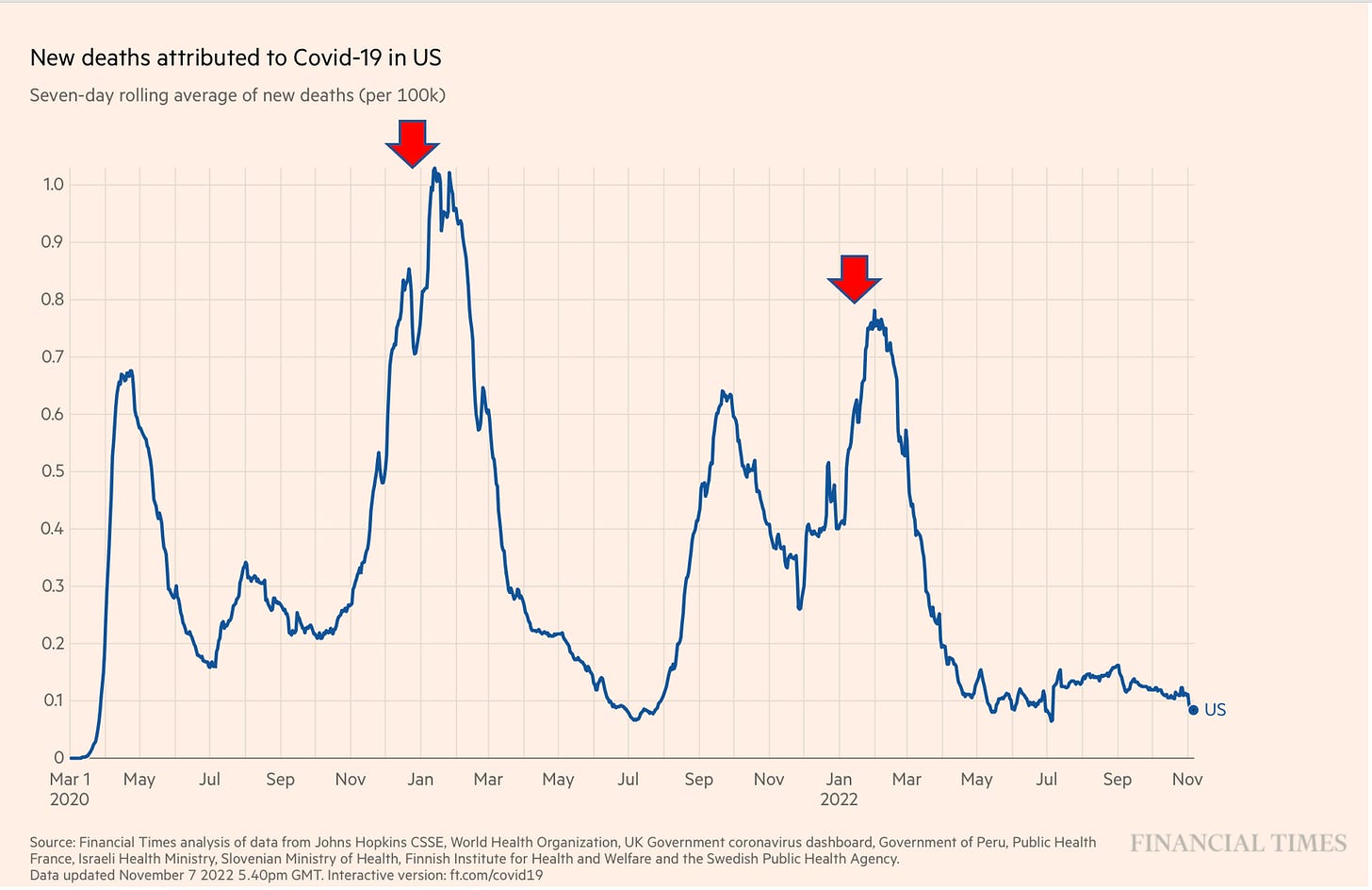The virus has evolved considerably since the summer BA.5 variant became globally dominant. This diagram by Rodrigo Quiroga (@rquiroga777) shows how BQ.1.1 picked up 6 mutations (abbreviated as muts) beyond BA.2, the predecessor to BA.5, and has had a marked growth advantage (100%). It became dominant first in France and is on the way to doing the same in the United States.
But as Tom Wenseleers aptly pointed out today, BQ.1.1 is losing steam, on the way down, “dropped like a rock”. That was not anticipated.
And despite the BQ.1.1 wave in France , new Covid hospitalizations were on the decline throughout, as you can see below. The worry about this highly immune evasive variant with such troublesome multiple mutations beyond BA.5 has not played out as even a significant wave of new cases, no less severe Covid.
In New York State, where BQ.1.1 is at the highest level in the United States (still well below peak in France), there has yet to be any increase in Covid hospital admissions, which is another positive sign.
This uncoupling of immune escape predicted by lab assays vs an actual benign clinical outlook is the first we have seen in the pandemic. Previously, substantial increments in immune evasion were associated with significant new waves, such as the Beta variant wave in South Africa, the Gamma variant in South America, or the different Omicron lineages throughout the world.
However, for BQ.1.1 (and the 6+ mutations in the first Figure) there is one piece of clear evidence of immune escape that is quite concerning—-the anticipated loss of efficacy monoclonal antibodies, Evusheld or Bebtlelovimab. That affects preventive therapy for the immunocompromised, or backup therapy when Paxlovid isn’t successful, respectively.
Cautious Optimism
Of course, there are still reasons for concern. The US hospitalizations for Covid have not gotten below 25,000 for several months and now they are ticking up a bit, especially in people age 70+ (lower graph). That’s occurring without a BQ.1.1 effect giving a relatively high baseline to build from.
That’s where the bivalent booster, which has been grossly under-utilized, needs to kick in. We’ve learned, as I reviewed in recent daily updates, that the bivalent BA.5 booster helps protect against BQ.1.1 and BA.2.75.2, another potentially troublesome variant here (at lower levels) in the US. Only ~15% of people age 50 and older, the group with most to gain from the bivalent booster, have yet received it. And recall our booster rate is far less than France, with even more of a gap than Singapore which did well against XBB (an 8 mutation evolution from BA.2, first Figure). A big push to get seniors better protected now would be important—as of today only 23% of Americans 65 and over have had the bivalent booster.
Besides booster-openia, the other concerns are lack of nearly any mitigation measures (M is for masks), that other variants with more mutations such as, BQ.1.1.x, XBB.x or CH.1 could take hold (following this newsletter, Rodrigo Quiroga posted an update to the top Figure, shown below, indicating BQ.1.1.10, for example, with 7 mutations) and the potential at some point for a whole new family to emerge that is antigenically distant from Omicron. And for now, we can’t just be Covid-centric, since flu and RSV are causing major illness and hospitalizations throughout the country, which are likely to increase through the winter months (yet another reason for mitigation measures, flu shots).
Paxlovid News, a Bonus
In a post yesterday, I reviewed the Veterans Affairs new study that showed a 26% reduction of Long Covid, which is really welcome news, along with further reduction of deaths, hospitalizations, and many complications of Covid over the extended 90 day follow-up time (and the event curves are still diverging). Please take a look at it if you get a chance. It’s an unanticipated bonus of early treatment to get the virus to stop replicating.
Conclusion
With Thanksgiving and the holidays around the corner, the outlook is far better than what we’ve been through for the past 2 years. The immunity wall built by vaccines, boosters and infections, appears to be holding up to substantial evolution of the virus (at least in France). And the virus is having a harder time to find new hosts to replicate within and spread, its primary mission.
If we can get through the next couple of months without a significant wave and we see no major, further evolution of the virus (a big if), it’s possible we’ll be able to say the pandemic phase is behind us after 3 full marathon years. Some of that—preventing a wave of infections and severe Covid— is indeed under our control, such as much more uptake of boosters in people at increased risk and the use of mitigation when or where appropriate.
Nevertheless, with these caveats and the context of what we’ve seen in France to date, the outlook is quite positive.
Thanks for reading. Please subscribe and share if you find this newsletter helpful

